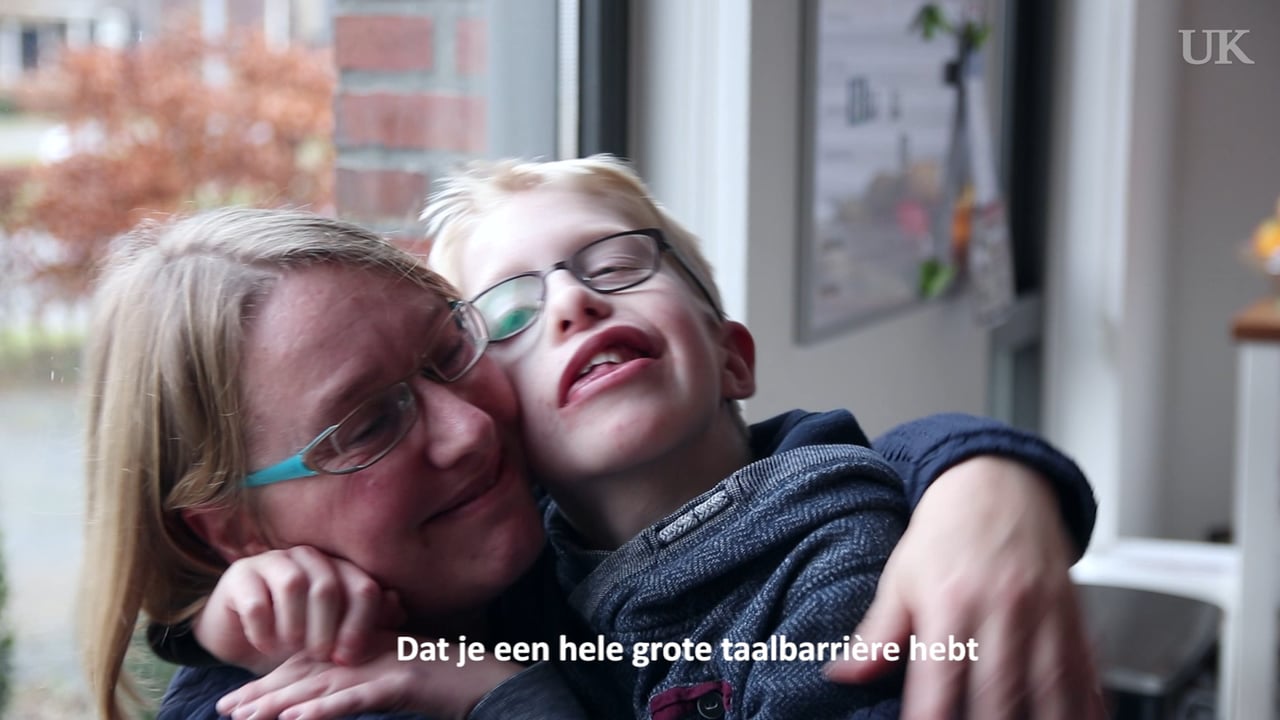Give it a try: put on headphones and a blindfold and live your daily life that way. It is not easy. The simplest things like making coffee or doing laundry suddenly have to be done by touch.
And communication just becomes impossible. How can you make clear what you mean? And how can you learn a language if you are deaf-blind from birth?
The master’s degree programme Communication and Deafblindness mainly focuses on communicating with people who are deaf-blind from birth. Teaching these people language is a matter of teaching them routines. ‘If you want to teach a deaf-blind person something you have to do it by touch’, says professor Marleen Janssen.
‘You have to do things together, repeating certain movements until they attach meaning to it. If one particular movement means you want a drink, they will figure that out after a while. You can then expand that to all kinds of daily actions.’
Unique
Marleen Janssen is the only professor in the world in the field of communication with deaf-blind people. Not surprising, since there is only one programme in this field. The master is unique, and students come to Groningen from all over the world to follow the programme.
Janssen: ‘One woman from Kenya who is doing the programme wants to develop a method to communicate with deaf-blind people in her country. She feels responsible for her entire country, because she is the only master’s student in Kenya who researches communicating with deaf-blind people.’
On the whole, very little research into communicating with deaf-blind people exists. There are ‘only’ 4,000 people in the Netherlands who were born deaf and blind, which could explain the lack of research.
‘However’, says Janssen, ‘a deaf-blind person comes into contact with quite a few caregivers and communication partners who are often at a loss. There are approximately 500,000 of them in the Netherlands. That’s enough to fill a small city. That is how I convinced the RUG to let me begin this programme.’
Increasingly well-known
The amount of students that graduated from the programme over the past decade is not very high, either: 65. That is because the programme had to make a name for itself first. The capacity of the programme is not very high because Janssen has to coordinate the programme herself, as well as supervise all the foreign teachers and the dissertations. Janssen says, ‘Attracting students was difficult. But once word-of-mouth got going, we became increasingly well-known. Now we have 25 enrolments every year in January and we can handle 12 to 15 students.’
In spite of the relatively low number of students, the RUG is very satisfied with the programme. That is due to its high level of quality and the attention the RUG gets because of it. ‘No one else offers this programme, so the eyes of the entire world are on the RUG. Obviously they’re very happy about that’, Janssen says.
Marleen Janssen feels it is our duty to teach and educate deaf-blind people. ‘Everyone has a right to education, including deaf-blind people. They have a right to the same full life as everyone else, and we should provide them with whatever it is they need for that. I think it’s only natural.’




